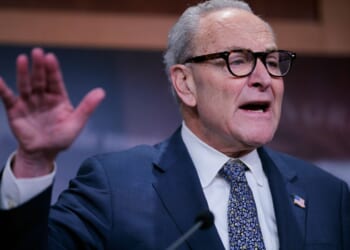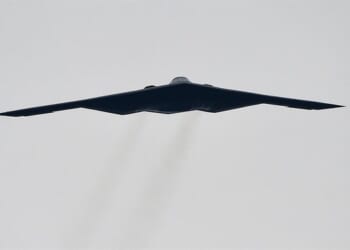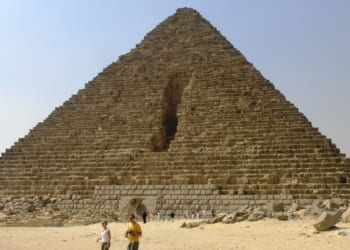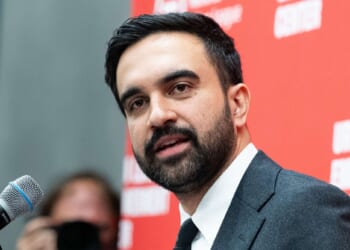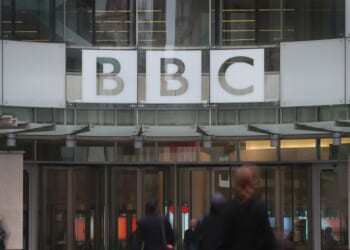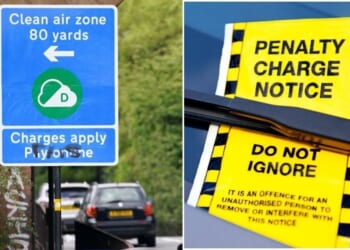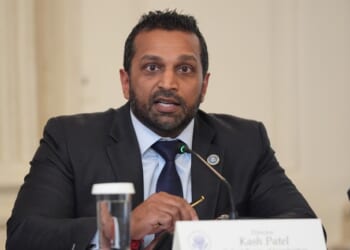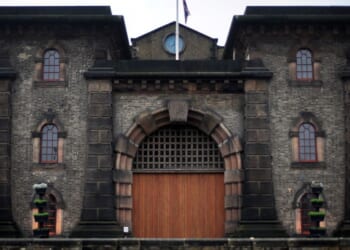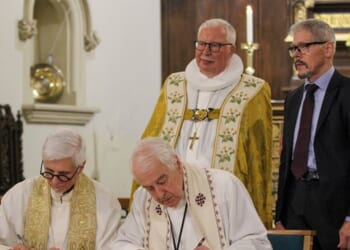This new article is here. The Introduction:
Over the past decade, the Roberts Court has sought to disrupt two major domains of the First Amendment: the Religion Clauses and free speech. These interests have recently merged to yield a flurry of cases raising complex questions at the intersection of free speech and religious liberty. This Article argues that the Court’s emerging approach to such cases threatens to unravel longstanding free-speech doctrine and the core values underlying it.
These dangers are on full display in the Court’s analysis of a recent case addressing the constitutional quandary posed by the religious speech of public employees. Kennedy v. Bremerton School District involved Joseph Kennedy, a high-school football coach and devout Christian who, after each game, knelt in prayer at midfield, joined by players, adult community members, and the media. After repeatedly requesting that Kennedy refrain from this so-called “demonstrative prayer,” Bremerton School District placed Kennedy on administrative leave due to its concerns about the consequences of his behavior, including the difficulty of ensuring security at the games and the risk that the District would be violating the Establishment Clause by allowing Kennedy to continue. Kennedy refused to reapply for his coaching job and alleged that the District had violated his free-speech and free-exercise rights.
The Supreme Court has long recognized that public employees like Kennedy enjoy some degree of free-speech protection. In recognizing this qualified protection, the Court seeks to strike a careful balance. On one hand, employee-speech doctrine vindicates public employees’ free-speech rights. On the other, it aspires to vest in school districts, government agencies, and other public institutions the leeway to manage themselves—and their workforces—effectively. To negotiate this fundamental tension, for public-employee speech, the Court has eschewed the stringent review typical of other areas of free-speech doctrine in favor of a more flexible balancing test: When a public employee speaks as a citizen on a matter of public concern, the Court balances the “interests of the [employee] … in commenting upon matters of public concern” against “the interests of the State … in promoting the efficiency of the public services it performs through its employees.” However, when an employee speaks as part of her public employment, the employee is owed no free-speech protections at all because it is, in effect, the government—not the employee—speaking.
Kennedy appreciated little of this fragile détente. Taking up both Kennedy’s free-speech and free-exercise claims, the Court granted certiorari on the questions of “whether a public-school employee who says a brief, quiet prayer by himself while at school and visible to students is engaged in government speech that lacks any First Amendment protection” and “whether, assuming that such religious expression is private and protected by the Free Speech and Free Exercise Clauses, the Establishment Clause nevertheless compels public schools to prohibit it.” Justice Gorsuch authored an opinion for a six-Justice majority holding that the District’s actions violated Kennedy’s free-speech and free-exercise rights, and that the District’s Establishment Clause interest failed to save its otherwise unconstitutional action.
Rather than evaluate Coach Kennedy’s claims on their own merit and according to the doctrine applicable to each, Justice Gorsuch flattened the claims into a zero-sum, culture-war battle over religious liberty. For Gorsuch, Kennedy was no tough case. It was, boiled down, a “government entity [seeking] to punish an individual for engaging in a brief, quiet, personal religious observance doubly protected by the Free Exercise and Free Speech Clauses of the First Amendment.” As Gorsuch saw it, in disciplining Coach Kennedy, the school district had flouted the principle that “[r]espect for religious expressions is indispensable to life in a free and diverse Republic—whether those expressions take place in a sanctuary or on a field, and whether they manifest through the spoken word or a bowed head.” Religious expression is religious expression, Gorsuch told us—”form” and “context” be damned.
And yet, Gorsuch’s creative deviations in Kennedy notwithstanding, the Court’s well-established precedents provide a relatively tidy doctrinal framework for each of Kennedy’s claims. Neither of those frameworks prescribes the analysis Gorsuch performs in Kennedy.
On the free-speech front, the Court has held that public employees receive free-speech protections only when speaking “as citizens.” Public employees who instead speak “pursuant to their official duties” speak not as citizens but as employees and are not “insulate[d] … from employer discipline” at all. Further, a public employee may receive protection only for “speech on a matter of public concern”—not for speech on “private matters.” This distinction “must be determined by the content, form, and context of a given statement, as revealed by the whole record.” Fifty years of precedent can thus be synthesized into a (deceptively) straightforward rule: A public employer’s disciplinary actions trigger the First Amendment only when an employee speaks (1) as a citizen (2) on a matter of public concern. If both conditions are satisfied, the Court then conducts “particularized balancing,” weighing the employee’s particular speech act against the government’s particular interests in regulating it.
The free-exercise framework is similarly streamlined. If a rule or action that burdens free exercise is neutral and generally applicable, it is subject only to rational-basis review. However, if the rule or action is either not neutral or not generally applicable, it is subject to strict scrutiny and likely fails. A government policy is not neutral if it is “specifically directed at … religious practice,” is “discriminat[ory] on its face,” or otherwise has “religious exercise” as its “object.” And a government policy fails the “generally applicable” requirement if the state allows for individualized exemptions from the policy but denies a religious exemption, or exempts comparable secular conduct.
Perhaps blinded by a reflexive desire to defend religious speech, the Kennedy majority glossed over the many tensions latent in the First Amendment’s clauses, opting instead to focus only on their supposed synergies. Justice Gorsuch declared that free speech and free exercise “work in tandem” to “provide[] overlapping protection for expressive religious activities.” But from that alluringly simple proposition flow two unavoidable problems. The first bears on the scope of this supposed “overlapping protection” in the realm of public employment: How far does the public employee’s bundle of First Amendment protections extend before it crashes into the constitutional bar on government establishment of religion? Justice Sotomayor’s dissent and a growing body of literature respond forcefully to this question. Largely missing from that discussion, though, is an acknowledgment and exploration of Kennedy‘s incompatibility with, and devastating consequences for, free-speech doctrine.
This Article seeks to tease out this second conflict. For all its high-soaring rhetoric about the Free Speech and Religion Clauses operating in tandem, Kennedy simply does not fit within the Court’s existing free-speech doctrine. This Article illustrates how Justice Gorsuch’s blurry conception of Coach Kennedy’s expression runs afoul of the Court’s own employee-speech doctrine and threatens to distort it into an inactionable muddle.

